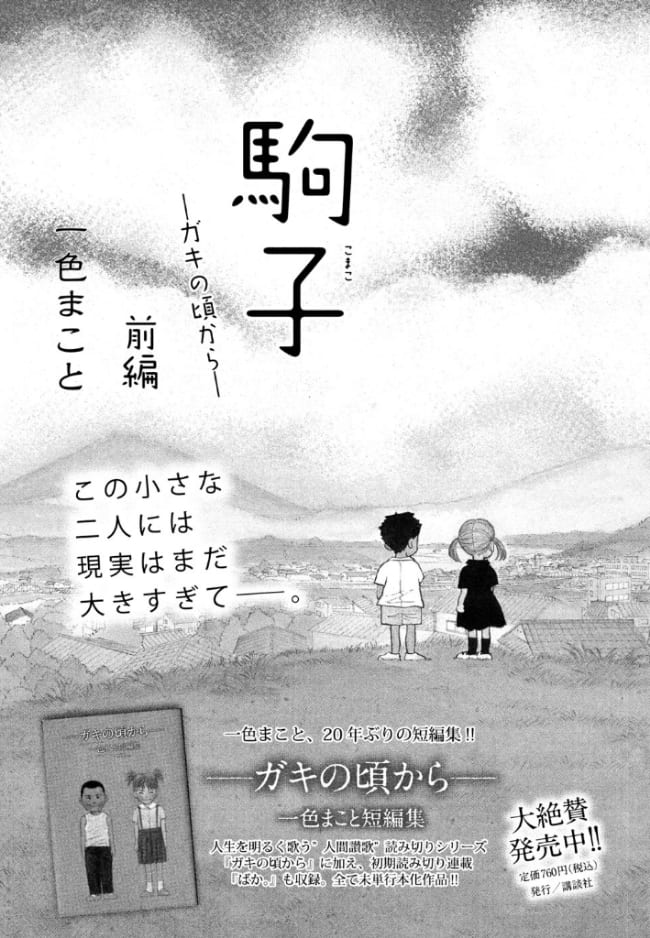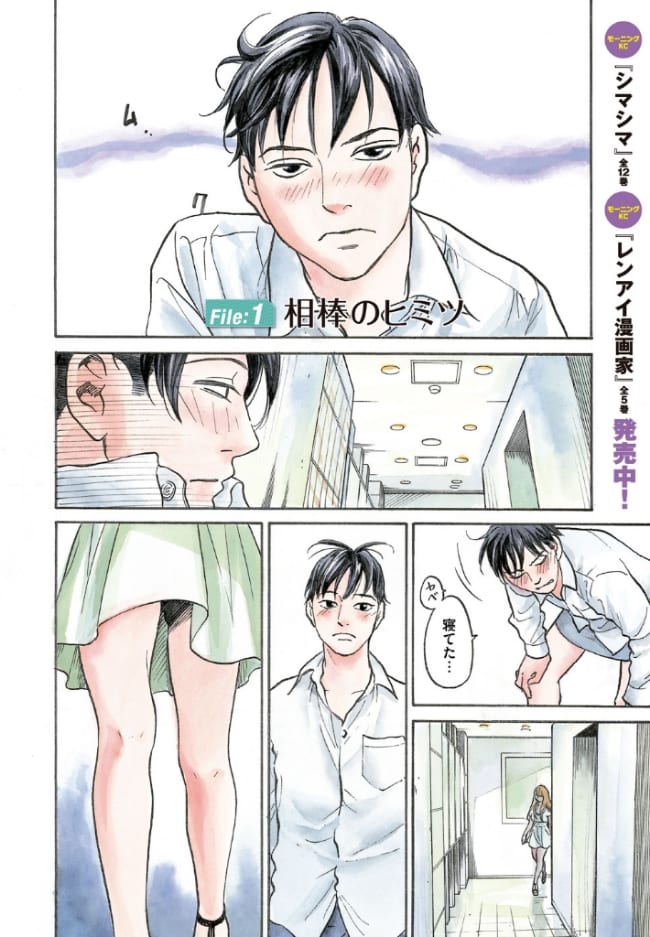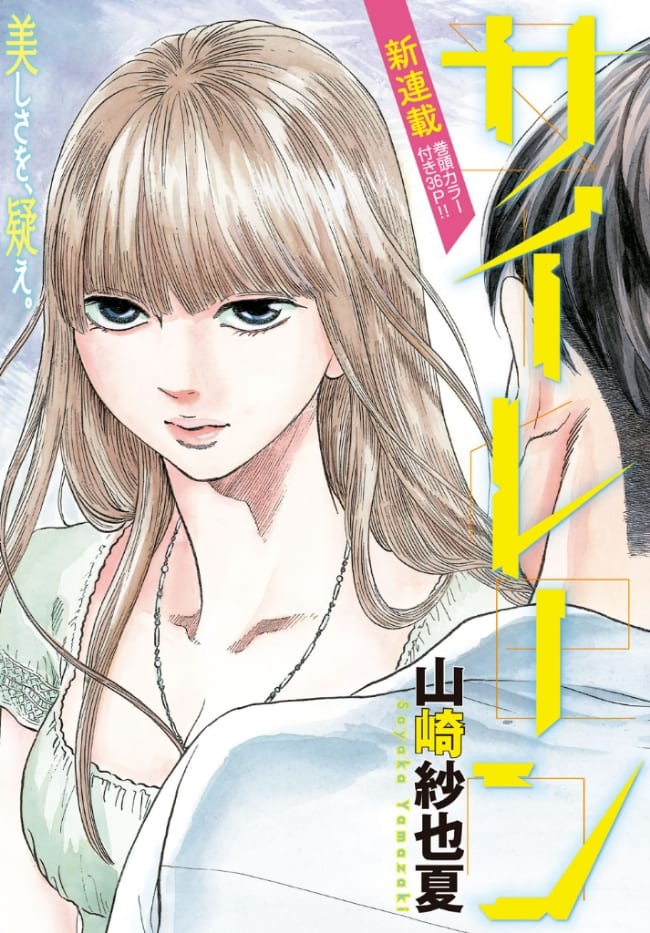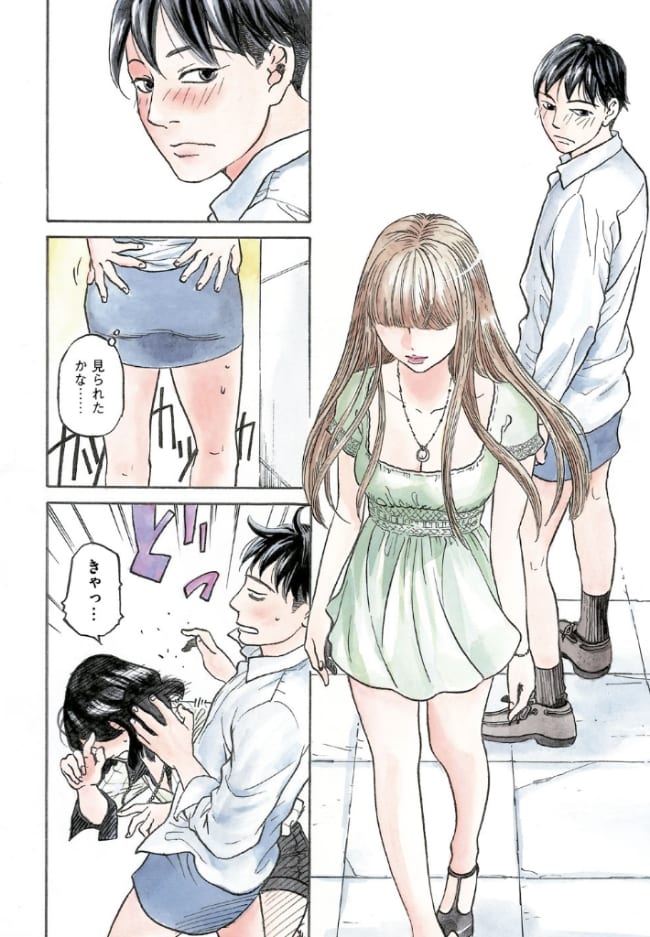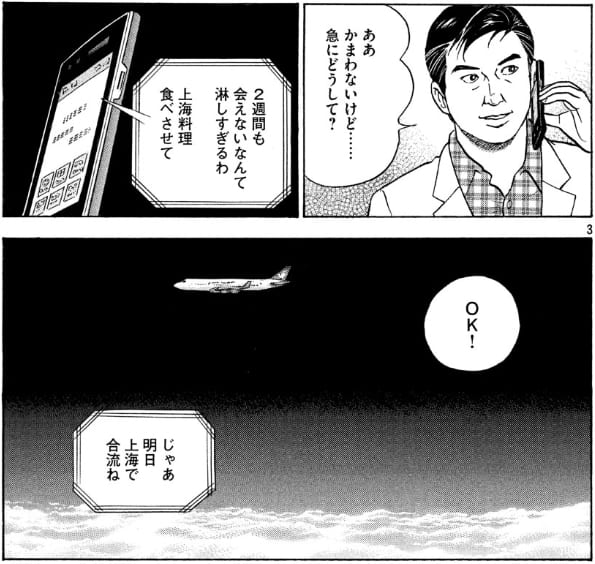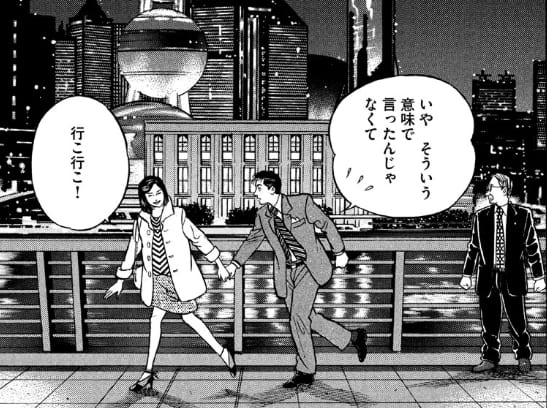I have been advised by THE INTERNET not to comment rashly on the closure of the Brooklyn Comics and Graphics Festival, because who knows what the still-interested principals might try and do in the future, but for now - it's a nasty hit. Top-quality conventions have become more and more important to bookshelf- or minicomics-based independent publishers, and the loss of as big a stage as this leave a lot of folks with one less high-profile venue for sales and hype. Also, it gives jackasses like myself one less excuse for an extended shopping trip to the Big Shitty, a loss no doubt acutely felt by the tens of you anticipating one of my patented here's-the-contents-of-a-manga-anthology-I-cannot-actually-read-ho-ho post-convention roundups.
Well guess what? I may not have gone to TCAF, and I may not being hitting up the BCGF, but we are living in the digital fucking future my friend, and nothing will stop me from holy communion with comic books in a foreign tongue. It was just last week, in fact, that Kodansha's flagship seinen anthology Weekly Morning made history by becoming the first-ever weekly manga magazine to release a day-and-date digital edition, D-Morning, for iPhone & iPad, exposing its Japanese-language contents to all the world. Or, rather, its Japanese-language contents barring two heavy-sitter serials -- Naoki Urasawa's & Takashi Nagasaki's Billy Bat and Takehiko Inoue's Vagabond -- which appear to have gotten themselves excused from the digital effort a la sickly children in gym class.
(Also, the app is not *supposed* to be sold outside of Japan, though it's a rather simple maneuver to purchase an iTunes Japan gift code online, present that to Apple in lieu of a Japanese-issued credit card, and then state your address as whatever you can find online that'll fill all the blanks. Incidentally, this week's column is dedicated to all you stray bōsōzoku down at the Zushi Marina of scenic Kanagawa Prefecture!)
 To your left you see the cover art for the sample issue included free with the D Morning app, approximating the contents of the May 9, 2013 Weekly Morning. Upon forking over your first ¥500 monthly subscription fee, you will presumably be graced with the current (May 16, 2013) issue, with subsequent editions to follow every Thursday. I don't know for sure, since the in-app purchase won't accept my gift card, potentially due to my crafty refusal to provide a credit source for Kodansha to suckle from.
To your left you see the cover art for the sample issue included free with the D Morning app, approximating the contents of the May 9, 2013 Weekly Morning. Upon forking over your first ¥500 monthly subscription fee, you will presumably be graced with the current (May 16, 2013) issue, with subsequent editions to follow every Thursday. I don't know for sure, since the in-app purchase won't accept my gift card, potentially due to my crafty refusal to provide a credit source for Kodansha to suckle from.
Nonetheless, the free sample does appear to be a full issue. In fact, it's *more* than that, since Kodansha has seen fit to top off any serial near the start of its run with prior chapters from earlier issues, causing the whole thing to weigh in at 493 pages(!) and a whopping 635 MB of disk space - no doubt to reinforce the 'read, then recycle' ethos of serial comics in Japan. The image quality is excellent, on par with any North American comics release (for that big a file, it'd better be). Zoom capabilities are included, but there is no guided reading option. A menu offers access to all 26 features, and there are web links to purchase digital editions of various collected books. It's all very simple.
Plus, if you're really feeling burned over losing those two serials, Kodansha has politely included a pair of bonus stories. Stories with motives.
Ah yes, why *not* plop an advertisement right onto the title page of this Makoto Isshiki short? Anime watchers will recall a 2007 film based on the artist's long-running Piano no Mori serial, but Kodansa would rather you understand that many delightful stories are AVAILABLE NOW from the same author in the book pictured at the bottom left, while the 23rd collected volume of Piano no Mori is dropping this very month! I'm personally not familiar with Isshiki's work, though I'll give it up for any artist working diligently toward a type of childhood evocation that'll prove discomfiting to a wide swathe of readers.
A wee lil' fellow is close to his sister. But the children soon grow, alas, and the tenor of the boy's protective attitude changes as the girl's blossoming physicality leads to confusing and unwanted attention. Or, at least that's the story the pictures tell me, among them a partially nude first menstruation vignette I can't imagine enjoying worldwide distribution without some cause for concern, although hey - Apple's carrying it. Anyway, it's a reflective, sniffly tale, pitched consistently in this register:
But it's not all kids in the D Morning bonus features. Seinen manga is comics for (male) adults, after all, and subject matters can easily encompass older protagonists.
Kazumi Yamashita is pretty much unknown in North America, as far as I can tell, but she's been active in Japan since 1980, working in a style so immediately recognizable I feel like I *know* her work entirely from staring at untranslated chapters of incomplete serials I see in random magazines. Her D Morning piece is from a series of one-off stories which, in this instance (at least), also ties in to The Life of Genius Professor Yanagizawa, her chronicle of the daily affairs of an aged economics professor, which has been running intermittently since 1988 and is anticipating its 34th collected volume next month - hence the inclusion here, no doubt.
I really love the stripped-down nature of Yamashita's art, honed over the decades so that hardly any extraneous lines mark her characters' bodies. This is difficult enough to do when drawing ideal human forms, but the way she denotes age with exactly the right curvature of a face, precisely the necessary number of wrinkles around eyes and a mouth - she touches something close to the fundamentals of cartoon-'realist' comics art, something that conveys a profound delicacy in this slice-of-life story about shopping for a piano. Just terrific.
Moving on to the regular Weekly Morning features, a few are recognizable to North American readers due to Vertical's licensed translations. Those include Kanata Konami's cat antics in Chi's Sweet Home (up to ch. 191) -
And more from those sloppy lushes in Tadashi Agi's & Shu Okimoto's The Drops of God (ch. 387) -

Moreover, there's a few continuing series that haven't actually been licensed for English-language release, though sharp-eyed readers will probably recognize them anyway. Hikaru Nakamura's Saint Young Men, for example -- it's the one where Jesus and Buddha are roommates in modern Japan, and hilarity ensues -- pops over from Kodansha's more alt-flavored Morning 2 monthly anthology for a special episode commemorating its new anime movie -
And since it wouldn't be a manga anthology without some sweaty sports action, there's also the latest from Masaya Tsunamoto's & "Tsujitomo"'s unamerican football opus Giant Killing -
But wait. You're looking for something a little more... refined? It's cool. I think this is more your speed:
HELL YEAH, all-color, handwritten lettering. No, it's not la bande dessinée, it's 68-year old Seizō Watase, who linked his fate with that of Weekly Morning in 1983 with the debut of his color Heart Cocktail series, soon adapted into a run of barely-mobile television anime shorts notable for their contemporary jazz scores. And, of course, their unique look.
Watase's new series is titled Dr. Aisuke's Solitude, and it appears to concern the romantic potential of dentistry. I totally bought this concept, because *good god* does this man have a fantastic command of color, enough so that Kodansha mustn't have hesitated to grant him a valuable non-b&w slot in every issue - and since the series actually started running in the April 18 edition of Weekly Morning, there's sixteen big pages here to drool over.
As far as I can tell, Watase has had exactly one publication released in North America: a catalog (The World of Seizo Watase: Lovin' the American Winds and Waves of the 60's) relating to a 1998 exhibition of his works at the Japanese American Cultural & Community Center of Los Angeles, California. Obviously it doesn't fit in with the prevailing notions of how 'manga' should behave in our austere localization climate, but maybe some heroic world comics publisher might try and take a look? I mean -
DAMN.
Big ticket manga magazines are always good with the color bits, though. Witness the start of this new serial, Sairen, from Sayaka Yamazaki:
Whew! This is already more dramatic than the last eight months of action comics I've read, plus the coloring's better, PLUS that one girl is dressed in something somebody might actually want to wear! The scenario of Sairen concerns police detectives who solve crimes and live together, oh em gee, and since it actually debuted in the April 25 double issue of Weekly Afternoon, it winds up occupying 54 pages of the D Morning sample issue, turning it into a de facto 'main' feature. These are the only color pages, though. Nice launch for a serial that's yet to warrant a primary cover illustration.
But, you know, I'm mostly spotlighting these series for blunt force visual appeal. Like this:
From Gangoose, by Keisuke Hiya, adapting a novel by Daisuke Suzuki. I picked it because the girl on the left looks like a Sam Kieth drawing.
Or this:
The title page of Kou no Dori by You Suzunoki. I love the little English legend down below the logo:
Childbirth is not a disease.
But we don't know what may happen.
Therefore we need an obstetrician.
Indeed! Suzunoki employs a bent, harsh-edged style throughout, fully applicable to the drama of birthin' babies, but he's not alone in powerful titles:
Proving here that there's no such thing as trying too hard is artist Tenka Hara, adapting the Mitarai series of detective stories by veteran mystery novelist Souji Shimada. That's the second novel-based series we've encountered so far, though the most efficient comparison I can make with these comics is to television programs: doctors, cops, cooks, detectives - it's a regular prime time lineup, reflective of the position of manga in Japanese culture as a full-fledged popular mass visual medium, shrinking but still pertinent.
Still, try and look closely at this -
There's something weird about Hara's art, something stiff and self-evidently digital that comes through especially well when seen on an illuminated screen. Almost every portion of his art that isn't white space is crammed tight with minute pixelated tone, not entirely unlike the computer-drawn art of Mike Saenz a few reading generations ago, but much more sophisticated. The phrase 'mainstream Uno Moralez' comes to mind, even though Hara's stuff looks nothing like that. Still, there's something sinister about this serial, a cold and inhuman force, just barely contained in the cozy confines of a very intense sweater vest:
Yes, it's a riot of feelings, this D Morning, and I haven't even covered its broad assortment of four-panel yonkoma strips like Risu Akizuki's OL Shinkaron, which I believe has been running since the Heian period. I trust its extraordinary popular appeal will be immediately discernible.
...
Uh, some features work better than others in this type of column.
As such, I will close out by showcasing another humor series: Ra:tino, by Gou Oohinata.
The protagonist of this installment Ra:tino is a dinosaur in sexy nylons and high heels. Sometimes he/she turns into a robot, sometimes a variety show host.
The prevailing sensation of Oohinata's art is that of acute societal absurdity, strongly reminiscent of Yoshikazu Ebisu, drenched in irony and barely-concealed torment played out in media ritual.
Ebisu, of course, was a television star himself. This kind of thing became a little more integrated with the Japanese mainstream than U.S. perspectives might expect. But isn't this a mainstream comics you want to read? Isn't this tantalizing, this promise of weekly dispatches? Don't you feel eager and vulnerable, standing next to something so big, so alive? So close?
***
PLEASE NOTE: What follows is not a series of capsule reviews but an annotated selection of items listed by Diamond Comic Distributors for release to comic book retailers in North America on the particular Wednesday, or, in the event of a holiday or occurrence necessitating the close of UPS in a manner that would impact deliveries, Thursday, identified in the column title above. Not every listed item will necessarily arrive at every comic book retailer, in that some items may be delayed and ordered quantities will vary. I have in all likelihood not read any of the comics listed below, in that they are not yet released as of the writing of this column, nor will I necessarily read or purchase every item identified; THIS WEEK IN COMICS! reflects only what I find to be potentially interesting.
***
SPOTLIGHT PICKS!
Sunny Vol. 1: And what an auspicious release for New Comics Wednesday! It's not every week you see any seinen manga showing up in English, let alone a new release from the great Taiyō Matsumoto, whose adventurous explorations of youth and fantasy have proven doggedly resistant to popular success in North America, except for when anime is involved. Perhaps hoping to split the difference, publisher Viz is now presenting this newest, still-ongoing joint -- something about kids, a car, and dreams, which is all I need -- with a translation by the aforementioned anime's director, Michael Arias. Then again, it's being released in a fancy 224-page hardcover format, which suggests the publisher may be more interested in pursuing the Vertical/D&Q/Fantagraphics 'quality' audience of general alt comics consumers over the general manga-reading audience that sniffed at GoGo Monster, which was totally the best comic I read in 2009. Up to vol. 3 in Japan, and I can't wait; $22.99.
Aesthetics: A Memoir: Aw, but don't feel left out, fans of confrontational English-original enterlightenment! The motherfucking Yale University Press has you covered with this spanking new 7.5" x 7.5" hardcover by Ivan Brunetti: educator and gag man. Details are still remarkably scant as to the contents, but what's known is that it's a 120-page evocation of an artistic trajectory, "only occasionally interrupt[ing] the parade of images with words that seem like little more than captions," per Kirkus. Obviously, you will want to take a look at this, as Brunetti's is a keen mind, and his two-volume An Anthology of Graphic Fiction, Cartoons, and True Stories suggested a flair for curation. Also, there's probably jokes; $25.00.
--
PLUS!
The Property: Israeli artist and Actus Tragicus co-founder Rutu Modan has released a number of works since her 2007 graphic novel Exit Wounds picked up an enormous amount of wider-media acclaim - she released both a compilation of short works (Jamilti and Other Stories) and a New York Times serial (The Murder of a Terminal Patient) in 2008, and last year saw the release of her first comic for children, Maya Makes a Mess via Toon Books. Still, I suspect this 232-page whopper's status as a long-format original hardcover, coming from her frequent publisher, Drawn and Quarterly, will mark it as the 'true' follow-up to Exit Wounds in the minds of many curious browsers. The scenario concerns a grandmother/daughter trip to Warsaw, which is more than it seems - your mainstream comics pick of the week. Preview; $24.95.
My Dirty Dumb Eyes: Also from D&Q, a 7" x 9", 120-page softcover collection of comics, drawings and illustrated reportage by Lisa Hanawalt, one of the most assured comedy voices to emerge in years, with a fine grasp of a very particular brand of visual grotesqueness that offers her humor its unique kick. Not a comprehensive collection, be warned, but very fine stuff. Samples; $22.95.
Wally Wood: Eerie Tales of Crime and Horror: As all of you know, EC accounted for only a very small portion of the crime and horror comics released in that great boom period of the late '40s/early '50s. Naturally, its most popular artists would have some accounts maintained elsewhere. Hence - 212 color pages right here, representing the purported entirety of the titular superstar's non-EC output in the crime & horror genres in the 1950s, which I'm presuming will also encompass post-Code material. An 8.5" x 11" Vanguard production, available in softcover, hardcover, and a slipcased deluxe edition with a bonus 16-page folio; $24.95, $39.95 & $69.95 (respectively).
Vampirella Archives Vol. 7: In which Dynamite presents issues #43-49 of the original Warren magazine, at which point editor Bill DuBay was scripting the title feature. One of my favorite Warren writers, Bruce Bezaire, has some nice stuff in this one, and the art is by the usual gang of European and American talents, including José Gonzalez, Fernando Fernández, Esteban Maroto, José Ortiz, Ramon Torrents, Rafael Auraleón, Gonzalo Mayo, Luis Bermejo, and señor Neal Adams. Samples; $49.99.
Rocky & Hudson: The Gay Cowboys: That reminds me - it's pretty rare to find a publisher these days with a specialty in translating Spanish-language comics. The first name that comes to mind is KettleDrummer Books, although the scope of their interests is a little wider. For example, here's a 104-page, 8.5" x 6" landscape-format hardcover collecting some 1990s Brazilian newspaper strips by cartoonist and television comedy writer Adão Iturrusgarai, which are supposedly of an inoffensive nature, according to the one dude who's left a review on Amazon, aka: potentially the sum total of writing on this work in English; $19.95.
The Phantom: The Charlton Years Vol. 2: Also in older stuff, Hermes Press offers another 224 pages of purple-clad exploits, representing issues #39-47 of the Charlton series and notable for a bunch of art by Pat Boyette, as well as a four-page story from Steve Ditko, provided all the contents of every issue will be included; $49.99.
Saturn Apartments Vol. 7 (of 7): Further proof that seinen manga is not quite dead in English comes from this gala conclusion to Hisae Iwaoka's very nicely-drawn outer space character drama, another Viz pickup from Shogakukan's Monthly Ikki anthology, from whence came Sunny as well. It's 264 pages before you never see it again; $12.99.
Lobster Johnson: Satan Smells a Rat: Very, very far from dead - all those Hellboy Universe comics from Dark Horse. Tucker wrote about his dissatisfaction with the line last week, and I agree to the extent that I can, in that I've personally dropped off in reading a lot of this stuff. Nonetheless, the Lobster Johnson pulp hero material has been consistently strong -- indeed, the Tonci Zonjic-drawn Caput Mortuum was one of the best superhero comics of 2012 -- and this new one-off boasts art by the always-fun Kevin Nowlan. Preview; $3.50.
Solid State Tank Girl #1 (of 4): I believe this is the Tank Girl series in which the artist was chosen via an open audition over the internet. The chosen applicant is one Warwick J. Cadwell, an illustrator, webcartoonist and anthology contributor, teaming up with the character's co-creator and steady writer Alan Martin for a Titan-published miniseries. These typically look pretty nice. Sample images; $3.99.
The Bounce #1: Speaking of steady writers, here's Joe Casey's latest superhero project from Image, an ongoing series about a pothead superhero purportedly inspired by Casey's experiences writing for Disney's Ultimate Spider-Man television cartoon. All the potheads I know will go to superheroic lengths to ensure they never leave their home without an adequate stash, so this seems a pretty solid concept. The artist is David Messina. Note that the third round of Casey's Sex (with Piotr Kowalski) is also due. Preview; $2.99.
Occupy Comics #1 (of 3): Oh look, a big-ass Kickstarter success. All revenues from this Black Mask Studios production is reportedly going to "various Occupy-related initiatives," so I'm treating it as sort of like one of those star-studded benefit books for the CBLDF or the Hero Initiative or something, which is to say I'm expecting a sort of earnest, declarative quality to many of the submissions, fronted by an essay from Alan Moore. Other contributors include Art Spiegelman(!), Matt Bors, David Lloyd, Mike Allred, Dean Haspiel, J.M. DeMatteis, Douglas Rushkoff, Ales Kot, Molly Crabapple, Charlie Adlard and many others across 40 pages; $3.50.
Drawn to New York: An Illustrated Chronicle of Three Decades in New York City: And finally, your not-entirely-a-comic of the week -- a blend of "comics, illustrations, and sketches," per the publisher, PM Press -- is this 208-page, 8" x 10.5" hardcover by Peter Kuper, an extended homage to his longtime home. Yeah, I need to visit that place more often; $29.95.
--
The problem with these image-heavy posts is that they wind up seeming unbalanced once I get to the weekly list. I try to throw in some bonus images at the end here, just to square up, which often gives me the added excuse to write once again about beloved murderer Duke Togo, whose newest adventures I always try and pick up when I'm in the city. Unfortunately, I am evidently *not* in the city, and Golgo 13 is serialized in Shogakukan's Big Comic, which does not appear to have a digital edition for me to throw money at (yet).
As such, I will now endeavor to spotlight the closest possible equivalent from the pages of Weekly Morning... 'CAUSE WHO NEEDS MURDER WHEN YOU'VE GOT MONEY?
That right, bitches - all rise for President Shima Kōsaku, among the undisputed flagship properties of Weekly Morning, established in 1983 by artist Kenshi Hirokane, a dissatisfied salaryman at Matsushita Electric Industrial (now the Panasonic Corporation) who escaped his dreary life for good by embracing the Total Ideal.
Section Chief Shima Kōsaku (or: "Kachō Kōsaku Shima"), as it was known back then, detailed the life and times of the ultimate salaryman, a veritable living avatar of the fictional 'Hatsushiba' corporation, who understands no distinction between his professional and personal life. As Washington Post Far East bureau chief T.R. Reid wrote in the excellent 1995 business manga anthology Bringing Home the Sushi: An Inside Look at Japanese Business Through Japanese Comics!, Shima Kōsaku represents "the paradigm of the shigoto ningen, the salaryman who basically lives for the job... Shima sees himself not so much as a sales type or an accountant or a manufacturing engineer; rather, he draws his identity from Hatsushiba."
The series has continued across eight incarnations, each bearing a different job title. There was a movie, and several television series. Dozens of collected volumes. There was a Super Nintendo game. The Economist commented on the 2008 debut of President Shima Kōsaku, which succeeded Executive Director Shima Kōsaku, and I imagine will be followed by Purposeless Retiree Shima Kōsaku, at which point the title character will fall off a stool and die, like Cerebus. He is approximately 60 years old. His series is now celebrating its 30th anniversary. It premiered only one year after Weekly Morning itself.
I adore Shima Kōsaku. It's apparently filled with intrigue and skullduggery, and, per Reid, "a dizzying round of romantic adventures with attractive, and often sexually voracious, woman." I've never seen any of that. All I've seen is the most blissfully dull comic in all the world.
This is a totally representative page. It is nothing but talking heads, and the occasional exterior perspective. Truth be told, Golgo 13 is a lot like this too - the majority of every story is characters talking. But there is no threat of more literal head shots in Shima Kōsaku. It's the most pefectly buttoned-down, discreet, grown-up comic imaginable. I enter a zen state staring at it.
This is the action highlight of the May 9, 2013 chapter. A big meeting is beginning with top ASIAN LEADERS.
And then, three pages later -
The meeting ends!
Would I be so interested in this comic if I knew what everyone was saying? I think so. Somewhere inside me, I have this longing for comics that feel their age, that aren't interested in targeting a youth demographic, or make any particular effort at expanding or commenting on the form. Anathema to a real critic, I know! What hackwork, eh? Wouldn't I get the same feeling from reading Judge Parker every day?
Yet there's a scope to Shima Kōsaku that can't be denied. It has a virility to it - a longevity. I think that comics in America perpetually teeter on the brink of catastrophe... one defunct convention knocks out a fair amount of business for dozens of publishers. Hell, one too many big screen flops and an overeager junior executive at one of two corporate behemoths is probably all it'll take to wipe out the Direct Market distribution system on which this column is based. But if I saw Shima Kōsaku, man - comics like that reflect a readership in for the long haul. It'd be like blossoms from a cracked earth.
So good luck, Hirokane-sensei. Good luck, Shima Kōsaku! May your head for good business accompany you wherever you go, even around the world. Week after week.



